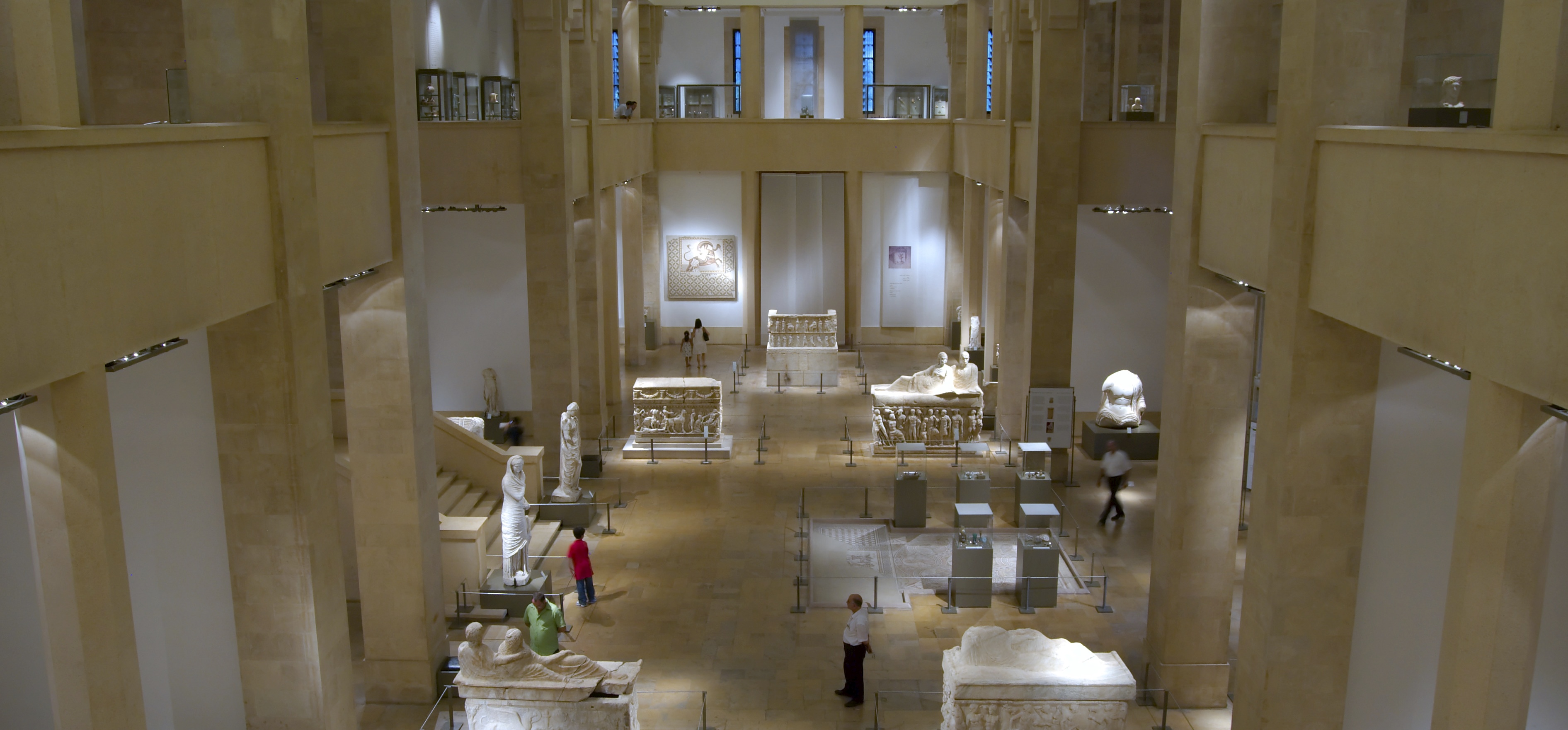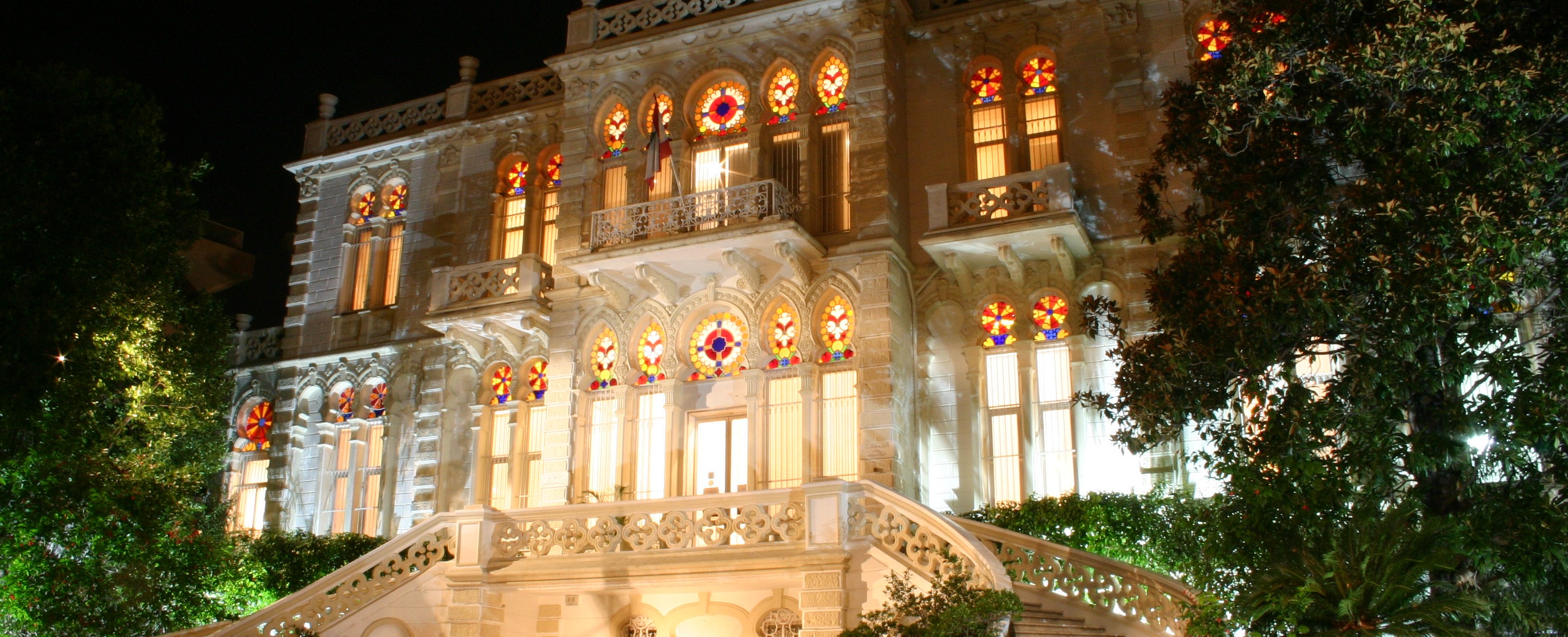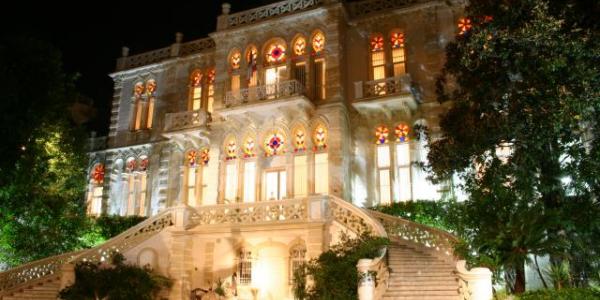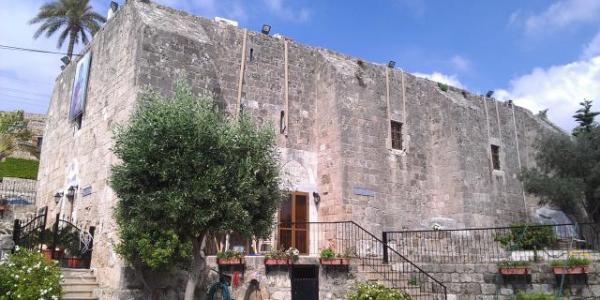Al-Umari mosque of Beirut
It is settled in the historic center of the city, close to the rebuilt Souk and the building of the House of Parliament. It has been considered the main mosque of the city since the 14th century. The mosque is constructed on the site of the Crusader church of Saint John the Baptist, built in the 12th century to be the cathedral of the Latin bishop, Baldwin of Boulogne.
Many architectural features in the mosque belong to the original church, including the foundations and the apse on the eastern side of the mosque, which is clearly visible on the exterior. The mosque was renovated and expanded in the early 1990s. It is an arcade overlooking the main street on its western side, which may have been the narthex of the church. The stonework in the interior shows crusader construction methods with large dressed stone. The space of the interior was altered to accommodate the direction of Mecca on the southern side of the mosque.
National Museum

Built between 1930 and 1937 the Museum houses today an important collection that encompasses Lebanon’s history from prehistory to the Mamluk period.
Located in the Mathaf area, it is a modest museum in size but it has a wonderful concise and informative collection of art objects from Lebanon, which come from various periods and regions of the country. The building is a good example of eclectic revival style. Its porch follows a typical Ancient Egyptian temple. It was designed by the Egyptian-Lebanese architect Selim Nahhas, who followed French revivalism of historic style. It is constructed in stone, and was restored in the 1990s. The interior has three floors of galleries in which Phoenician objects, Ancient Egyptian, Greek, Roman and Persian sculptures are displayed. A quite good collection of Roman and Byzantine mosaics also adorns the walls.
In the area of the museum there are some remarkable works of architecture, including the Pine Palace, the residence of the French Ambassador, which was the seat of the French governor of Lebanon during the French Mandate; there are also the modern horse race tracks, and the University of St. Joseph, and post-modernist buildings
AUB Archaeological Museum
This is the third oldest Museum in the Near East. It provides a unique point of view of the Near East from the Early Stone Age to the Islamic Period.
Heliopolis
The Heliopolis is the biggest Roman religious complex ever built and one of the best preserved sites of the country. Its columns are the tallest ever erected and its stones the largest ever used. The precinct includes several temples and buildings.
Lebanese Prehistoric Museum
This museum is located in the Letters and Sciences Faculty at Saint-Joseph University Street.
Sursock Palace/ Sursock Museum

This residence was built in 1860 by Moussa Sursock. Its architecture is an interesting blend of Ottoman and Italian styles. Adjacent to it is Sursock Museum, that houses contemporary and modern art collections.
The Grand Serail/ Roman Baths Garden
Now the seat of the Prime Minister’s office and residence, the Serail was originally built as army barracks in 1832 by the Ottomans and became the headquarters of Ottoman Governors and, later on, of all High Commissioners of the French Mandate. The building is covered with 588 arches and arcades on its interior and exterior facades. The Serail is closed to the public, but the Roman Baths, on the eastern slope of the Serail Hill, offer a good vantage point.
Amir Assaf Mosque
Facing the Serail, the mosque of the Emir Mansour Assaf was built in the 16th century on the former site of a Byzantine church dedicated to the Holy Rescuer.
Al Omari Mosque / St-John the Baptist Cathedral
Built by the Crusaders on Roman thermal baths between 1113 and 1150, Saint John the Baptist Cathedral was converted into a mosque by the Mamluks, who named it Al-Omari Mosque in honor of the Caliph Omar Ibn Al Khattab.
Mohammad Al-Amin Mosque
Commissioned by former prime minister Rafic Hariri, and built between 2005 and 2007, architecturally it blends the Egyptian Mamluk style with the Turk Ottoman style.
Saint George Maronite Cathedral
The Saint George Maronite Cathedral was built between 1884 and 1894 and its architecture was inspired from the Basilica di Santa Maria Maggiore in Rome.
St. Georges Greek Orthodox Cathedral
Located directly on Nejmeh Square, it is the oldest Orthodox Church in Beirut. It is believed to be located next to where the Law school once was, more than 1,500 years ago. It underwent many restorations due to disasters, erosion, and intentional destruction, the last of which was during the 1975-1990 war.
Nejmeh Square/ Abed Clock Tower
The square is home to the Lebanese Parliament, many historical churches and mosques. In the middle of the Nejmeh Square, the four-faced art-deco clock tower was commissioned by a Lebanese-Mexican in 1933 and designed by the Armenian architect Mardiros Altounian.
Martyrs Square/ Statue of the Martyrs
Built by the Ottomans in the 19th century and named the Cannon’s square, it was renamed Martyrs’ Square in remembrance of the rebels executed by the Ottomans during WWI. The iconic Martyr’s statue –completely bullet-riddled after the Lebanese civil war– was erected by Renato Marino Mazzacurati in 1958.
Wadi Abu Jamil and the Maghen Abraham Synagogue
Even though there are few Jews left, there once was a thriving community living in Wadi Abu Jamil. The synagogue is one of the very few left in the country.
A walk in Gourand Street
Located in the neighborhood of Gemmayzeh, this was the first street in the Middle East to have been lit with gas lamps. This historical neighborhood is one of the few that has kept its early-century flavor with Ottoman, French-era and Art-deco buildings. Nowadays, it is a major nightlife destination.




